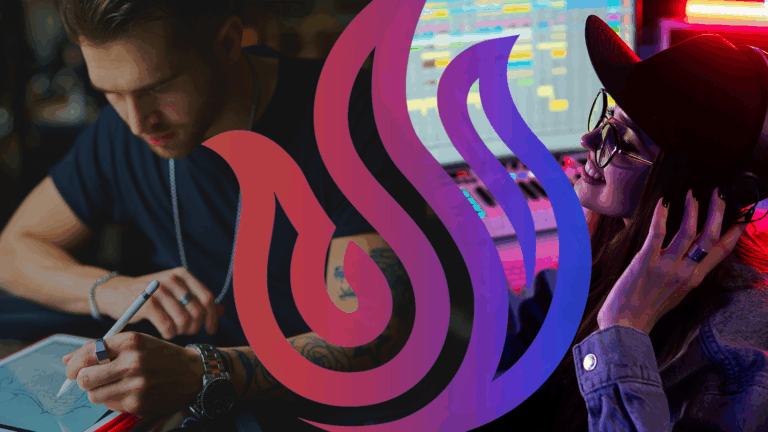Are you passionate about video games, animation, and storytelling through visual art? Dreaming of bringing imaginary characters and immersive worlds to life? If you’re thinking about turning your creativity into a career, attending a game art school in California could be the key to unlocking your future in the interactive entertainment industry.
In this expanded guide, we’ll walk through the complete picture—from understanding what game art really is and how it’s evolving, to exploring the day-to-day experience of a student, the wide range of creative career paths that open up post-graduation, and the unique role California plays as a national and global hub for game development and design.
Understanding Game Art: More Than Just Visuals
Game art is the emotional engine of modern video games. It’s how mood, identity, and story are communicated visually—and quickly. Game artists are responsible for the look and feel of characters, environments, lighting, objects, interfaces, and visual effects. They build the immersive atmosphere that keeps players engaged.
But game art isn’t just about illustration or beauty—it’s about function. Everything a player sees in a game must serve a purpose. That glowing orb in the forest? It might hint at a quest. The jagged rocks along the ridge? They could block movement or hide enemies. Game art has to be intentional, optimized, and responsive.
The job of a game artist requires balancing:
- Creativity (designing unique, appealing visuals)
- Technical skill (working with 3D software and game engines)
- Collaboration (with animators, programmers, writers, and sound designers)
What makes game art so compelling isn’t just its visual appeal—it’s how it evolves with technology, teamwork, and storytelling. Game artists today need to balance a creative vision with technical know-how and strong communication skills. They collaborate with animators, writers, programmers, and audio designers to build rich, playable experiences. These roles require more than talent—they demand adaptability.
As the gaming industry shifts toward more immersive platforms and stylized storytelling, game artists are increasingly expected to bring a unique voice while working within team pipelines. This blend of artistry and utility gives game art its power—and helps explain why it remains one of the most dynamic and future-ready creative careers in entertainment.
Emerging Trends Deepening the Field
As game art programs continue to evolve, students and professionals alike are navigating a landscape that looks dramatically different from just five years ago. In 2025, the game industry is being reshaped by rapid innovation—from the widespread adoption of artificial intelligence to the explosion of indie development and immersive technology. These shifts are not simply add-ons to the curriculum; they are redefining how games are made and who makes them.
Schools that prepare future artists are integrating these changes directly into their training, ensuring graduates understand not only how to use tools but how to think critically about the processes and philosophies behind them. Understanding these emerging trends is essential for anyone planning to enter the game art field today.
AI-Enhanced Workflows
According to a recent GAME3S.GG 2024 survey spanning 650+ employees across various industry companies, it was revealed that 73% of game studios are already using AI in their processes, with 88% planning to adopt the technology in the future. While controversial, AI tools now assist with generating base assets, iterating on style variations, and speeding up concept development—allowing artists to spend more time refining and storytelling.
From an employer’s perspective, AI isn’t about eliminating creative roles—it’s about making production more efficient. Studios are increasingly adopting AI to streamline early-stage processes such as asset blocking, reference generation, and repetitive texture work. This frees up human artists to focus on the elements that require critical thinking, creative judgment, and storytelling. In competitive pipelines with tight deadlines, those who understand how to integrate AI tools without compromising originality are seen as valuable hires—blending artistic intuition with emerging tech fluency.
Indie Renaissance
Indie game development is booming, particularly in California where creative communities thrive. Students now train not just for AAA studios, but for self-publishing or collaborating with indie teams where stylistic freedom and hands-on responsibility are high (CreativeBloq).
Student Showcases on the Rise
More student-created games are gaining visibility at professional industry events and festivals. From alt.ctrl.GDC to global game jams, it’s not uncommon for standout student projects to be featured alongside indie and studio titles. These opportunities highlight how practical, portfolio-driven education isn’t just preparation—it’s participation. For aspiring game artists, it means real exposure, industry feedback, and a launchpad into professional roles.
Inside Game Art School: What You’ll Actually Learn
So what do you study at a game art school in California? Programs are structured to take you from foundational principles to industry-standard production techniques—building a deep creative and technical toolkit over the course of a typical four-year bachelor’s degree.
Throughout the program, you’ll progress through hands-on courses that mirror real-world studio workflows. This includes both artistic fundamentals and specialized software training, leading up to collaborative production projects and a professional portfolio that showcases your strengths.
Even institutions like the University of Silicon Valley in California incorporate Real Word Project Studios into their curriculum where students dive into real-world experience with industry clients. Here is an example of what a traditional four-year bachelor’s degree may look like to many students:
Year 1: Foundations in Visual Design
Early courses emphasize traditional skills that help train the artistic eye:
- Life drawing and gesture sketching
- Composition and perspective
- Color theory and lighting
- Digital painting tools like Photoshop and Procreate
These lessons establish a baseline visual fluency and understanding of form, proportion, and movement—critical to any role in game art.
Year 2: 3D Tools & Digital Production
Once students have built their visual foundations, the focus shifts to mastering tools used by professionals:
- 3D modeling & sculpting with Blender, Maya, and ZBrush
- Texturing & surfacing in Substance Painter and Designer
- Rigging, animation & posing using Maya or MotionBuilder
- Lighting and scene composition in Unreal Engine or Unity
Assignments get more complex, often focusing on assets like characters, props, or environments for interactive game builds.
Year 3: Studio Simulation & Cross-Discipline Workflows
Midway through most programs, students begin working in simulated studio teams. You’ll collaborate across disciplines—game design, programming, audio—to:
- Manage production pipelines
- Present milestones
- Test and revise assets
- Deliver playable game demos
These group projects build not just artistic skill, but experience in communication, iteration, and meeting deadlines.
Year 4: Professional Portfolio & Industry Readiness
In the final year, the emphasis turns toward refining a portfolio that reflects your specialty and career goals. You’ll receive:
- Portfolio reviews from instructors and guest artists
- Resume and LinkedIn guidance
- Mentorship on job interview prep and art tests
Some schools also incorporate capstone experiences or advanced electives tailored to students’ interests in specific disciplines (like environment design or VFX). By graduation, your portfolio isn’t just an academic summary—it’s a curated showcase designed to open professional doors. Toward the final stretch of the program, you’ll refine a portfolio that reflects your specialty and target role. You’ll receive:
- Portfolio reviews from instructors and guest artists
- Resume and LinkedIn guidance
- Mentorship on job interview prep and art tests
By the time you graduate, your portfolio isn’t just an academic summary—it’s a curated showcase that helps you stand out to recruiters and studios. Throughout, your best work is gathered into a digital portfolio. Schools often host review sessions with alumni and recruiters. You’ll get feedback on layout, presentation, and what studios actually look for. Speaking of University of Silicon Valley in California mentioned earlier, some universities like them also offer paid internships that offer industry-connected opportunities to work on real projects.
Industry Trends Shaping the Future of Game Art
To stay competitive, schools update their curriculum to reflect current trends. These are areas you’ll likely explore or discuss in-depth:
Stylized Visuals & Indie Growth
Games like Hades, Cuphead, and Gris show that distinctive, hand-crafted styles are thriving. More studios seek artists who can create a consistent and memorable visual tone.
Cinematic Tools & Real-Time Storytelling
With Unreal Engine 5, artists can now build real-time cinematic cutscenes. You’ll learn shot composition, camera movement, and lighting not just for levels, but for storytelling moments.
Cross-Disciplinary Integration
Art doesn’t live in a vacuum. You’ll be expected to collaborate with writers, coders, and sound designers. Communication, scheduling, and pipeline fluency are now essential skills.
Immersive Platforms (VR, AR, XR)
With the rise of Meta Quest, Apple Vision Pro, and other immersive platforms, you’ll learn how to design for 360° environments, spatial UI, and motion-based interaction.
Inclusive & Global Design
Studios now expect cultural literacy. You’ll study how to avoid stereotypes, represent characters authentically, and design from diverse perspectives.
According to Lightcast’s 2023 Talent Scorecard, regional talent development plays a major role in the future of creative economies. California ranks high for creative workforce development, reinforcing why it remains a national leader in entertainment innovation (Lightcast).
A Day in the Life of a Game Art Student
Let’s imagine you’re in your second year at a game art school in California. Here is a potential schedule a student may have:
- 9:00 AM – Digital Sculpting class. You’re learning creature design by modeling a fantasy beast.
- 11:00 AM – Team meeting for a student game project. You’re collaborating with game developers and composers.
- 1:00 PM – Portfolio workshop. An instructor gives critique on your new environment render.
- 3:00 PM – Industry guest lecture from an artist at Blizzard Entertainment.
- Evening – You polish your lighting pass on a sci-fi corridor and upload it to ArtStation.
It’s fast-paced, collaborative, and hands-on.
Why Study in a Game Art School in California?
California isn’t just the home of Hollywood—it’s the beating heart of interactive media. For game artists, that means:
- Direct access to top studios like Riot Games, EA, Naughty Dog, Insomniac, and Obsidian
- A dense indie development scene in cities like San Francisco, Oakland, San Diego, and LA
- Frequent networking opportunities at GDC, SIGGRAPH, IndieCade, and campus recruiting events
- Cultural diversity that inspires new design approaches and narratives
Even if you’re studying remotely, a game art school in California often brings the industry to you—through virtual panels, mentor programs, and project partnerships.
Game Art Career Paths After Graduation
Once you’ve completed your degree and polished your portfolio, what’s next?
Character Artist
You bring heroes, villains, and background NPCs to life. This includes modeling, sculpting, and texturing based on concept art or original designs.
Environment Artist
You create the immersive spaces players explore. From lighting and layout to asset optimization, you’re the architect of the world.
Technical Artist
You build tools, optimize pipelines, and bridge communication between artists and engineers. Highly sought after.
UI/UX Designer
You build menu systems, health bars, maps, inventory screens, and other interfaces that shape player experience.
Concept Artist / Visual Development
You ideate and illustrate the look of characters, props, and settings in the pre-production phase of a game.
Animator / VFX Artist
You add movement and visual feedback—making characters walk, jump, emote, or explode into particle effects.
What Determines Career Growth in Game Art?
Progression in a game art career depends on more than artistic skill alone. Studios often look for candidates who show growth in three key areas: creative voice, technical versatility, and team collaboration. Entry-level artists typically begin by contributing assets to larger projects, while mid-level professionals may lead visual development for characters, environments, or UI systems. Senior and lead artists often guide style direction, mentor junior talent, and influence studio pipelines.
Career growth is also tied to your portfolio and how well it aligns with the studio’s visual style or gameplay genre. Staying updated on tools, workflows, and industry trends—like real-time rendering or AI-assisted design—can open doors to more advanced opportunities over time.
What to Look for in a Game Art School in California
Choosing the right school is critical. Look for:
- Up-to-date curriculum (Unreal 5, Substance, Blender, ZBrush, etc.)
- Experienced faculty from studios you recognize
- Portfolio-focused assignments that mirror real job expectations
- Opportunities for cross-department collaboration
- Support for internships, career placement, and alumni networking
Ask to view student portfolios on ArtStation. Compare the quality. If you wouldn’t hire from there—why enroll?
Online vs On-Campus: Which Is Right for You?
On-campus programs offer studio spaces, peer collaboration, and in-person events. Online programs offer flexibility, especially for working adults or out-of-state learners.
Choose online if you:
- Need to balance work or family
- Have a strong self-directed learning style
- Still want real-time feedback and industry access
- Don’t physically live near campus but still want to become a student remotely
Choose campus if you:
- Thrive in hands-on environments
- Want daily peer and faculty interaction
- Value networking and events in person
A Brief Note About USV
Located in the heart of Silicon Valley in California, the University of Silicon Valley (USV) offers a Game Art & Animation program designed by and for game industry professionals. Whether on campus or online, USV students graduate with polished portfolios, interdisciplinary experience, and the confidence to enter real studio pipelines. USV also offers a BA in Game Engineering and a BA in Game Design which was recently ranked among the top 30 undergraduate schools for game design by The Princeton Review.
👉 Learn more about USV’s Game Art & Animation program.


